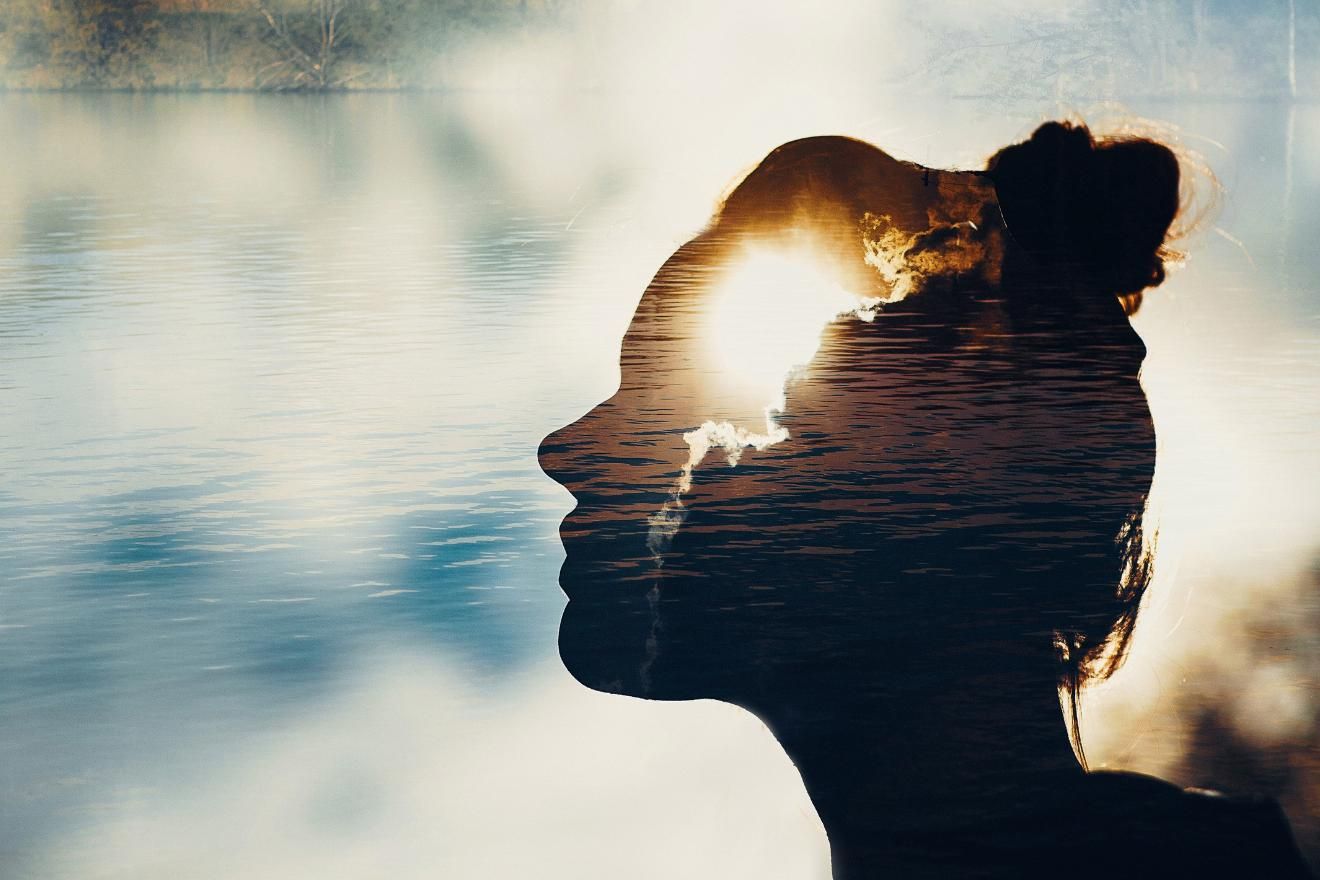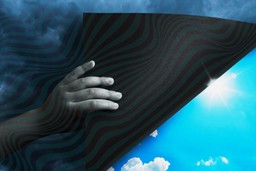Bad trips, otherwise known as challenging or difficult psychedelic experiences, can occur for a variety of reasons. But whether due to aspects of set and setting or dosage, psychedelic users can find them difficult to make sense of and recover from. Indeed, some negative journeys with psychedelics can be marked by high levels of emotional distress, sometimes leading to persisting psychological or existential issues.
As psychedelics become easier to use through changes to drug policy worldwide, in terms of both recreational and medical uses, it’s important to understand how best to help those who have had distressing psychedelic experiences. While the risk of difficult or even traumatic journeys can be minimized through proper screening, careful preparation, optimization of setting, and adequate support both during the journey and the integration phase, bad trips can still occur. And if this happens, do we know what an effective response might be?
A 2021 study published in the International Journal of Drug Policy has provided some clues. Authors Liridona Gashi, Sveinung Sandberg, and Willy Pedersen found that the stories users of psychedelics tell themselves about their bad trips can help turn these negative experiences into positive ones [1]. Before examining their findings, it will be useful to first describe what we mean by a ‘bad trip’.
What Defines a ‘Bad Trip’?
The authors of the 2021 study note, “There is no clear definition of what constitutes a bad trip.” But they acknowledge that they can include adverse reactions like anxiety, panic, depersonalization, ego dissolution, paranoia, as well as somatic symptoms such as dizziness and heart palpitations. Moreover, Barrett et al. (2016) developed a Challenging Experience Questionnaire based on challenging experiences with psilocybin, identifying seven dimensions of bad trips: fear, grief, death, insanity, isolation, physical distress, and paranoia [2].
We can also say that bad trips include affective (e.g. panic, depressed mood), cognitive (e.g. confusion, feelings of losing insanity), and somatic (e.g. nausea, heart palpitation) symptoms. In the 2021 study, the authors state that a key feature of a bad trip is “a feeling of losing oneself or going crazy, or ego dissolution.” It is worth highlighting that other research has found that ego-dissolution effects are correlated with the therapeutic benefits of psychedelics [3]. The loss of the sense of one’s identity during a psychedelic journey can induce fear or bliss, or even alternate between one and the other; it really depends on how one responds to this (intense) subjective effect.
As already stated, ‘set and setting’ influence negative reactions to psychedelics. ‘Set’ refers to individual factors, such as personality and mood (although knowledge of who exactly is vulnerable to bad trips remains unclear), whereas ‘setting’ refers to the social, cultural, and physical environment in which the psychedelic is taken. The type of substance and dosage can be relevant factors too. For instance, studies have associated bad trips with high doses [4]. Indeed, participants in the 2021 research described how most bad trips resulted from taking very high doses.
Typically, participants’ trips started out well, then something ‘challenging’ was experienced, leaving the user distressed, “struggling for a solution to what was perceived as the problem.” Some tried to remind themselves they had taken a drug, whereas others sought help from trusted friends. The challenging experience gradually subsided, either because of the strategies used or because of the effects gradually wearing off.
Now let’s turn to the design of the 2021 study on how users make sense of their bad trips.
Qualitative Interviews, Narrative Theory, and ‘Bad Trips’
The researchers carried out qualitative interviews with 50 Norwegian men and women (42 and 8, respectively). Most participants were in their late twenties or early thirties and lived in the greater Oslo area. The majority had used psychedelics between 10 and 50 times, with substances including LSD, psilocybin, 2C-B, DMT, or ayahuasca.
The researchers recruited most participants through a closed Facebook group based on psychedelic use (made up of approximately 7,000 members). In-person interviews lasted 2-3 hours, with the researchers using open questions, enabling participants to provide detail-rich stories about the inspiration, intentions, and social and cultural contexts of their psychedelic use. Bad trips were then explored in detail. The authors concluded:
“Bad trip narratives may be a potent coping mechanism for users of psychedelics in non-controlled environments, enabling them to make sense of frightening experiences and integrate these into their life stories. Such narrative sense-making, or narrative work, facilitates the continued use of psychedelics, even after unpleasant experiences with the drugs.”
In terms of study limitations, the authors stress that the self-recruitment aspect may have impacted the results. They write:
“For instance, it is likely that these participants are particularly interested in psychedelics and probably more motivated for using than other recreational users are. They may also have been influenced by the pro-psychedelic ideologies present in this online forum.”
Another interesting consideration is, as the authors say, “Results might have also been different if the sample was younger and their experiences happened under less controlled circumstances.”
The researchers used narrative theory to analyze the interviews they carried out, which is the study of how stories help people make sense of the world, others, and themselves. Storytelling allows us to choose what experiences we deem most relevant, fill in information gaps, bond with others, construct our personal identity, and achieve a sense of agency and coherence in our lives. As psychologist Dan P. McAdams states in the Handbook of Identity Theory and Research (2011), “Adults in modern societies construct integrative narratives to explain how they came to be, where their lives are going, and how they hope to fit in the world that awaits them” (pp. 99-100).
Bad trips will typically contain dramatic or even traumatic experiences that require both explanation and processing. Sometimes, narratively, this can be achieved by turning them into a humorous story, but often the decision is to imbue these experiences with a sense of meaning and purpose. This is consistent with the view that narratives and storytelling are crucial in recovering from trauma (Crossley, 2000; Kaminer, 2006; Tuval-Mashiach et al., 2004) [5, 6, 7]. Retelling or reconstructing a traumatic incident is common in therapeutic trauma interventions.
The researchers thus use narrative theory to explain how bad trip stories are narrative work used by psychedelic users to help them process, come to terms with, and positively transform challenging experiences. However, individuals may also create helpful narratives through integration circles, which center on sharing experiences and receiving feedback in a non-judgmental space, which is common in psychedelic communities and retreats.
Turning Bad Trips Into Valuable Experiences
Almost all participants had disturbing psychedelic experiences. However, reflecting on them, they felt they were meaningful experiences, providing them with deep insights. For instance, one participant, Hannah, said:
“The bad trips are what gives you the most insights. It’s this [bad] trip that shows you some sides of yourself that you perhaps have tried to diminish, that probably are the most important ones to understand. [These are insights] about who you really are, who you have been, what you’ve done, right. You have to see your flaws to be able to work through stuff.”
Hannah felt her bad trip allowed her to work through ego defenses and access repressed material, similar to what may be uncovered in psychodynamic therapy. Sometimes, unpleasant and frightening experiences were seen as necessary; Christina, for example, commented that you should not expect euphoric, blissful experiences from ayahuasca but ones involving self-development and hard work.
Others feel gratitude following their bad trips. Helen, for instance, had a distressing trip on LSD in which she struggled to do ordinary activities like eating and urinating, and was convinced she had choked herself to death. However, she said:
“In the following three weeks, I woke up each morning so happy just to be alive. I felt that I had been given a gift, that I was allowed to live, that I can take trips in nature, that I have so many good people around me. I just felt so extremely lucky. I don’t think that I would experience this feeling if it weren’t for the extreme distress that I experienced.”
In addition, many participants valued their bad trips “sometimes because the bad trips had enabled them to face and resolve deep-rooted emotional barriers, interpersonal relationships or taught them to control their life.” Even participants who had extremely adverse reactions – what they referred to as psychotic episodes – felt gratitude for them.
Bad trip stories often followed the narrative structure of classical literature of many genres, folktales, and everyday storytelling in which the protagonist travels somewhere, has some experiences (sometimes challenging ones), and then returns with new insights (transforming difficulties into positive outcomes). By imbuing frightening psychedelic trips with a purpose, users can give these experiences new and positive meaning, as well as integrate them into larger life stories (i.e. the kind of direction their life is taking), thereby making them feel coherent.
Bad trip stories also gave psychedelic users an opportunity to explore “ambiguous life histories and relationships, as well as raise and discuss existential and moral questions.” The authors add that narratives surrounding bad trips can lead to flexible meaning-making, which breaks free from rigid and narrow views of personal identity.
The authors note that narrative work following challenging experiences “may be particularly important for recreational users outside of safe and controlled therapeutic settings.” This is because, they state, “It is likely that in controlled and clinical contexts – with pre-screening of participants, professional “trip sitters” (e.g. nurses, psychologists), and follow-ups after participation – bad trips may be more benign.”
This doesn’t mean that narrative work should not also be valued in a therapeutic context. After all, this work may likewise offer benefits to those who have distressing experiences in controlled, supervised settings (when apparently everything – set and setting, and dosage – is ‘done right’).
Previous research (Griffiths et al., 2016) has found that high doses of psilocybin (average 4 grams) resulting in bad trips were, nonetheless, valued by users. 34% of those surveyed said their bad trip was among the top five most personally meaningful experiences of their life and 31% said it was among the top five most spiritually significant. 76% said the difficult trip resulted in an improved sense of personal well-being or life satisfaction. Interestingly, the degree of distress was positively associated with beneficial outcomes, so more difficult experiences were seen as more meaningful (although longer bad trips were linked to less beneficial outcomes) [8].
This study, like the 2021 one we’ve looked at, was similarly prone to bias because it relied on recruiting participants from psychedelic-focused online forums, which includes people who are more likely to have a favorable view of psychedelics. Nevertheless, the findings from the 2021 research indicate some of the ways people both cope with bad trips and how they turn them into valuable and meaningful experiences.
Follow your Curiosity
Sign up to receive our free psychedelic courses, 45 page eBook, and special offers delivered to your inbox.References
- Gashi, L., Sandberg, S., & Pedersen, W. (2021). Making “bad trips” good: How users of psychedelics narratively transform challenging trips into valuable experiences. International Journal of Drug Policy, 87, Article: 102997.
- Barrett, F. S., Bradstreet, M. P., Leoutsakos, J. S., Johnson, M. W., & Griffiths, R. R. (2016). The Challenging Experience Questionnaire: Characterization of challenging experiences with psilocybin mushrooms. Journal of Psychopharmacology, 30(12), 1279-1295.
- Kałużna, A., Schlosser, M., Craste, E. G., Stroud, J., & Cooke, J. (2002). Being no one, being One: The role of ego-dissolution and connectedness in the therapeutic effects of psychedelic experience. Journal of Psychedelic Studies, 6(2), 111-136.
- Bienemann, B., Ruschel, N. S., Campos, M. L., Negreiros, M. A., & Mograbi, D. C. (2020). Self-reported negative outcomes of psilocybin users: A quantitative textual analysis. PLoS One, 15(2), Article: e0229067.
- Crossley, M. L. (2000). Narrative Psychology, Trauma and the Study of Self/Identity. Theory & Psychology, 10(4), 527-546.
- Kaminer, D. (2006). Healing Processes in Trauma Narratives: A Review. South African Journal of Psychology, 36(3), 481-499.
- Tuval-Mashiach, R., Freedman, S., Bargai, N., Boker, R., Hadar, H., & Shalev, A. Y. (2004). Coping with trauma: narrative and cognitive perspectives. Psychiatry, 67(3), 280-293.
- Carbonaro, T. M., Bradstreet, M. P., Barrett, F. S., MacLean, K. A., Jesse, R., Johnson, M. W., & Griffiths, R. R. (2016). Survey study of challenging experiences after ingesting psilocybin mushrooms: Acute and enduring positive and negative consequences. Journal of Psychopharmacology, 30(12), 1268-1278.







